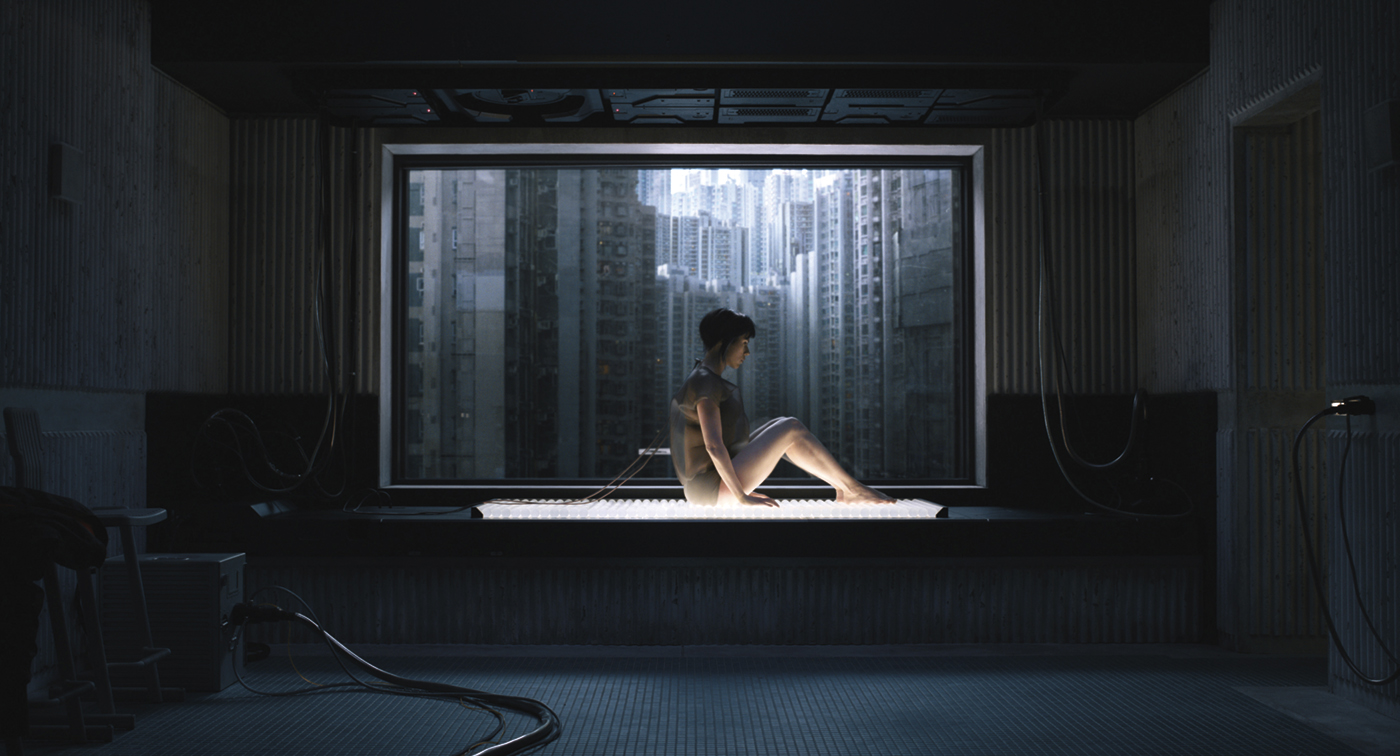Jess Hall, BSC, helps to create a live-action alternate future with the anime-inspired thriller Ghost in the Shell.
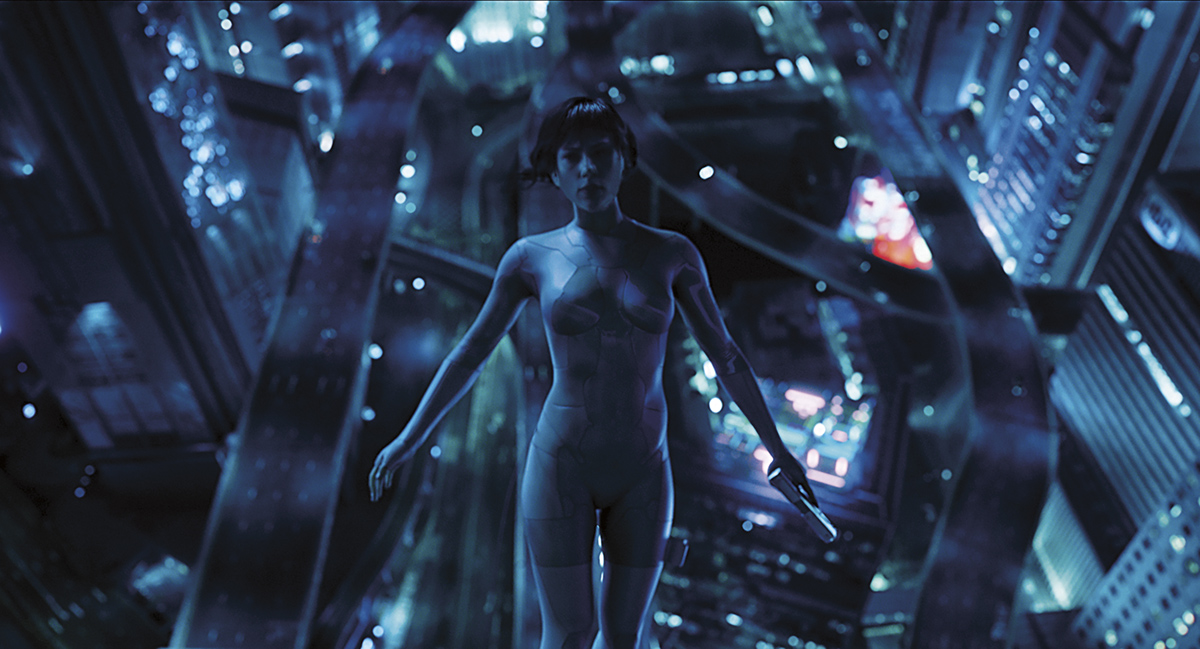
The 1995 animated film Ghost in the Shell is among the most acclaimed entries in the anime genre. Derived from a manga (Japanese comic book) series, it depicts the adventures of Major Motoko Kusanagi, a human-cyborg hybrid who leads an elite law-enforcement task force devoted to stopping cyber (and real) terrorism in 21st century Japan. Ghost in the Shell inspired interest in the U.S.A. as a live-action remake. (It’s often cited as one of the principal influences on The Matrix.) But the project remained unrealized for years until Steven Spielberg brought Snow White and the Huntsman director Rupert Sanders onboard. The British filmmaker recruited Scarlett Johansson to star as the Major and Jess Hall, BSC, as director of photography. Kevin Martin talked with some of Ghost’s creative principals, including Hall, VFX supervisor Guillaume Rocheron, 1st AC Craig Grossmueller, Park Road Post workflow architect Tony Pratt, Park Road colorist Jon Newell and Park Road director of picture engineering Ian Bidgood, about the project’s groundbreaking use of new technology.
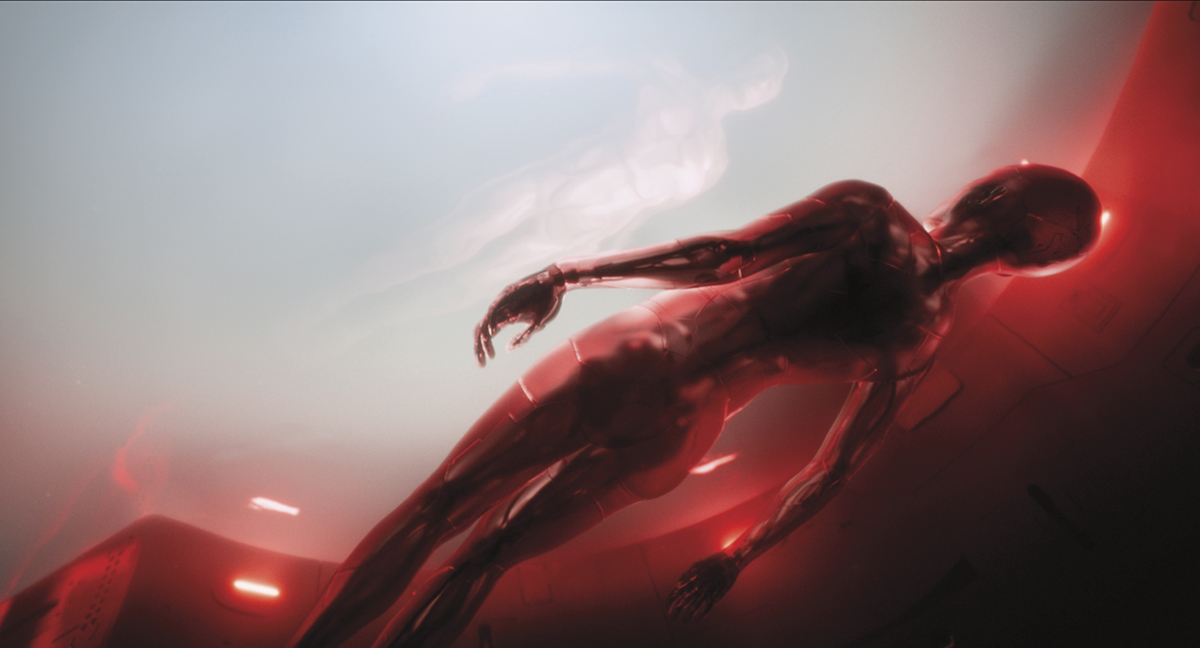
Preproduction: Stretching the Canvas
Jess Hall, BSC: Rupert handed me the first script for Ghost about a year in advance of principal photography. I’d been a massive fan of the anime Akira and gone through several VHS tapes of various versions growing up. Translating anime into live action has a challenging history, but I realized what an opportunity this could be and approached it on several levels, including composition and camera movement, translating 2D into 3D, stills into motion, and of course, color.
Guillaume Rocheron: Rupert’s idea for portraying this environment is that it is not our future, but a parallel one. They don’t have Wi-Fi, so everything is hooked up with cables and feels analog and retro. Rupert was keen to have a practical basis for our work, and responded best to being able to walk around a physical object, even if it was only used as a reference. Weta Workshop [in New Zealand] built a few miniature buildings that were scanned and made into digital assets. Those became design tools we could evaluate and alter until we were happy. We even used pieces from them as kit bashes to make interesting roof patterns.
Hall: Vittorio Storaro’s theories on color had a profound impact on me as a developing cinematographer, particularly his exploration of color as a signifier of both emotional and culturally specific meaning. These aspects of his work were masterfully employed in his magnificent works Apocalypse Now and The Last Emperor. I saw Ghost as a wonderful opportunity to develop a sophisticated and nuanced color palette with which to explore the parameters of color in the digital cinematography space. Working in concert with Rupert and production designer Jan Roelfs, I developed a design aesthetic that reflected Ghost’s anime origins whilst also drawing on many other sources.
In terms of color, I was inspired by the great works of anime but also traditional Japanese artists like Hiroshige for the use of simple yet refined color schemes to create a harmonious effect. I was particularly interested in combining colors, so my research went deep into color theorists like Josef Albers. In studying the original Ghost in the Shell and its sequel, Innocence, I was intrigued by the complex and unusual skin tones that appear for the Major, and I began to ask myself, “What if I could achieve something like that for Scarlett?” I was identifying soft grays infused with secondary colors of warmth or violet that were extremely subtle. The anime of Ghost was created using a mix of traditional cel work and computer animation, and, in moments, achieves an almost watercolor-like feel. I wanted to create something in live action reflecting that look, which hadn’t really been done before. This meant Ghost’s requirements were going to drive technological innovation.
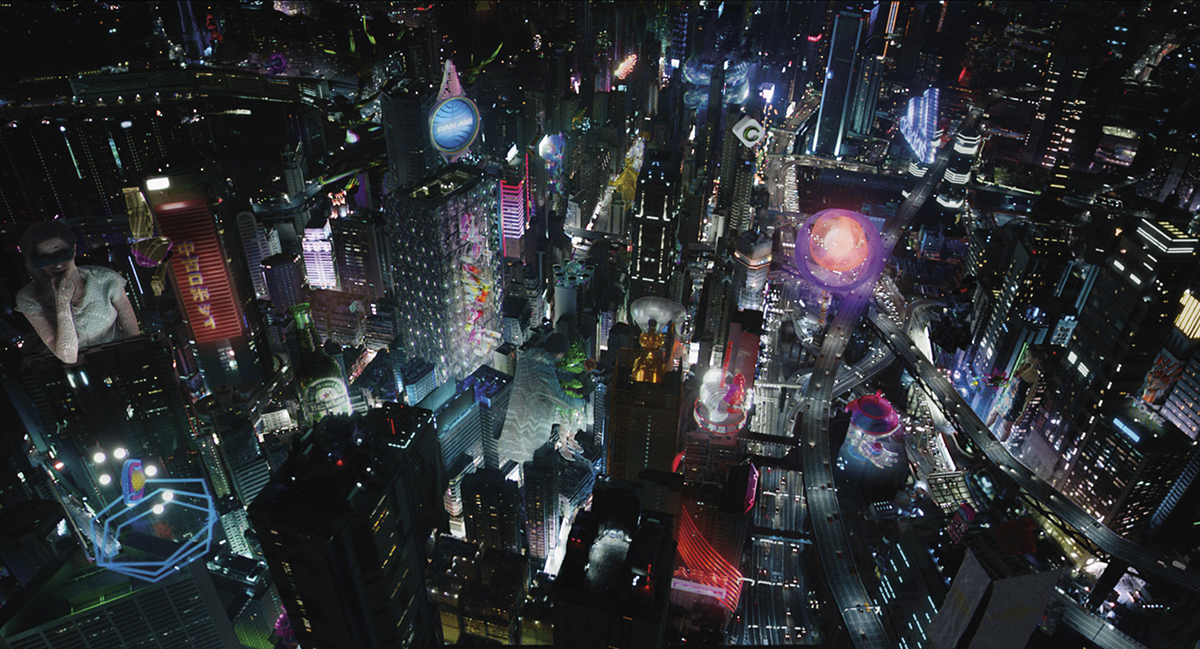
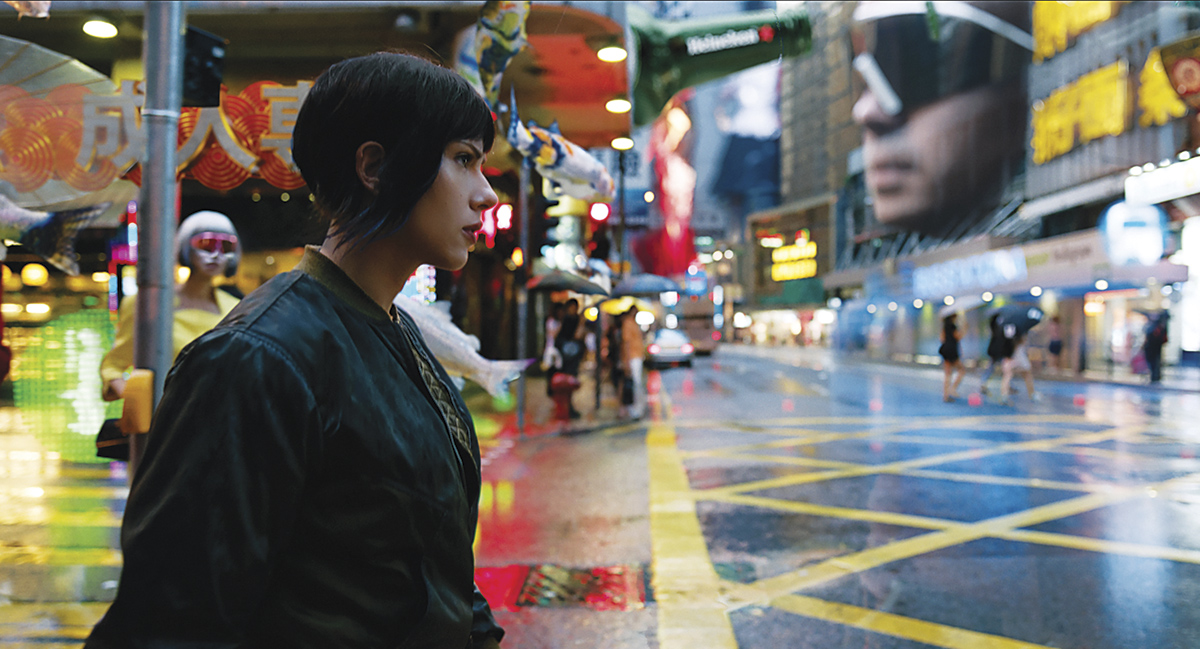
Production: Painting with Light
Hall: Based on the anime Ghost and some 2000 stills I shot at night in Hong Kong, I created a palette of 28 colors, achieved through LED’s. [See accompanying chart.] We programmed the 28 colors across fixtures – from Digital Sputnik, LiteGear, various Arri units and Creamsource Sky lights. Sputnik’s units had six-color channel mixing that was quite effective, and I could dim the fixtures without the color shifting. I couldn’t achieve all of the subtle washes I wanted, so I talked to LiteGear’s Mike Bauman, whose LED ribbon lights would be integrated into the sets, props and costumes. Mike developed prototype units that went beyond their four-channel RGBW. We could infuse any color with Tungsten, cool white light or amber, desaturating or shifting it toward more of a secondary coloration. Mike manufactured various custom fixtures, including LiteMats with six channels of color. This developed ultimately into the single more efficient 6-channel strip Cine6. After mixing the colors by eye and testing them on camera, these profiles were sent to the lighting desk, where they could be called up on any unit. We tracked everything so VFX would always know exactly what colors were being used on set. If they got a green screen element of someone in front of a window and had to add a nightscape outside, they’d know I used warm gray and pale blue-violet and could match our work.
Rocheron: In VFX, there are two scenarios: you’re either integrating your work with live-action elements or doing all-digital shots that also have to retain the properties inherent in the live action. So I really encouraged our vendors to use Jess’ color palette, especially MPC, which handled the cityscapes. We captured HDRI and lots of on-set reference in Hong Kong and during the majority of shooting, which took place in the Wellington, New Zealand studio. We didn’t notice light falloff from LEDs being much different from traditional lights, but their brightness was more intense. We used a lot of ray-tracing, modeling the digital lighting on real sources rather than cheating. There were many reflective surfaces, so calculating the amount and quality of light bouncing off these was immensely important.
Hall: Rupert and I had shot the Alexa 65 on a Halo commercial, and based on [the Halo] spot, I knew we needed a wider range of lenses for Ghost. In talking with [Panavision’s] Dan Sasaki, I thought a softer, painterly image was the goal, and considered vintage glass. But my need for absolute color consistency was at odds with that. I didn’t want veiling flares, but required a particular T-stop to be able to shoot available light in Hong Kong. Plus I needed the focus to fall off in a particular fashion. I liked how the compressed perspective looked with primes on the Alexa 65. Anime was often drawn with wide angles, but not necessarily with forced perspective, and the 65-millimeter helped with that. Views between 35- and 24-millimeter glass were appealing, so Dan built us the perfect wide-angle: a one-off 29-millimeter that we used throughout.
Craig Grossmueller: The custom spherical 65 lenses were the key to the puzzle and just looked amazing. I was hired on early to shoot Hong Kong plates with Jess, which also included some lens testing. I came back after principal to do the pickups and reshoots in Los Angeles. The plates were for exterior views of the city, seen beyond the various New Zealand-shot stage interiors. Main unit went back to Hong Kong for two and a half weeks after the New Zealand shoot, with 1st AC Jonas Steadman handling things. The L.A. reshoots were mainly single-camera, as Rupert seemed to favor a classical approach; although, if there was an opportunity for the second camera, they’d bring it in. It really amazed me how Jess was able to match the New Zealand setups so quickly. He would sit beside the DIT station, with the dimmer board operator on his left, while he studied the A- and B-camera feeds.
The whole set was lit by LED’s, with huge soft-boxes up on motors, and Jess controlling all of this plus camera functions. There wasn’t a lot of time for rehearsals, so sometimes we’d only have three or four takes with Scarlett before moving on. We’d set up with a stand-in, but she might do something unique and we’d of course want to accommodate her inspiration. On a 100-millimeter close-up, I noticed in mid-shot that only one of Scarlett’s eyes was in focus. We’re all on [communication] systems talking back and forth. I let Jess know, and he adjusted the lighting and stopped-down the camera a half-stop while the shot was rolling to get that extra bit of depth of field across her face. It was next-level work.
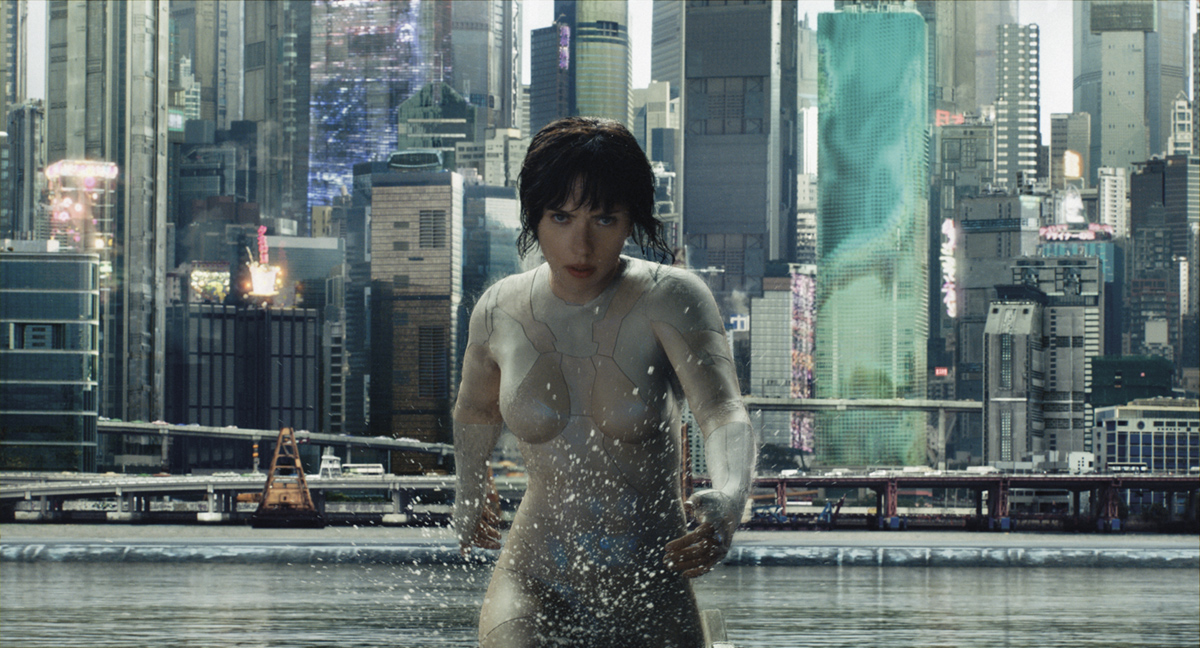
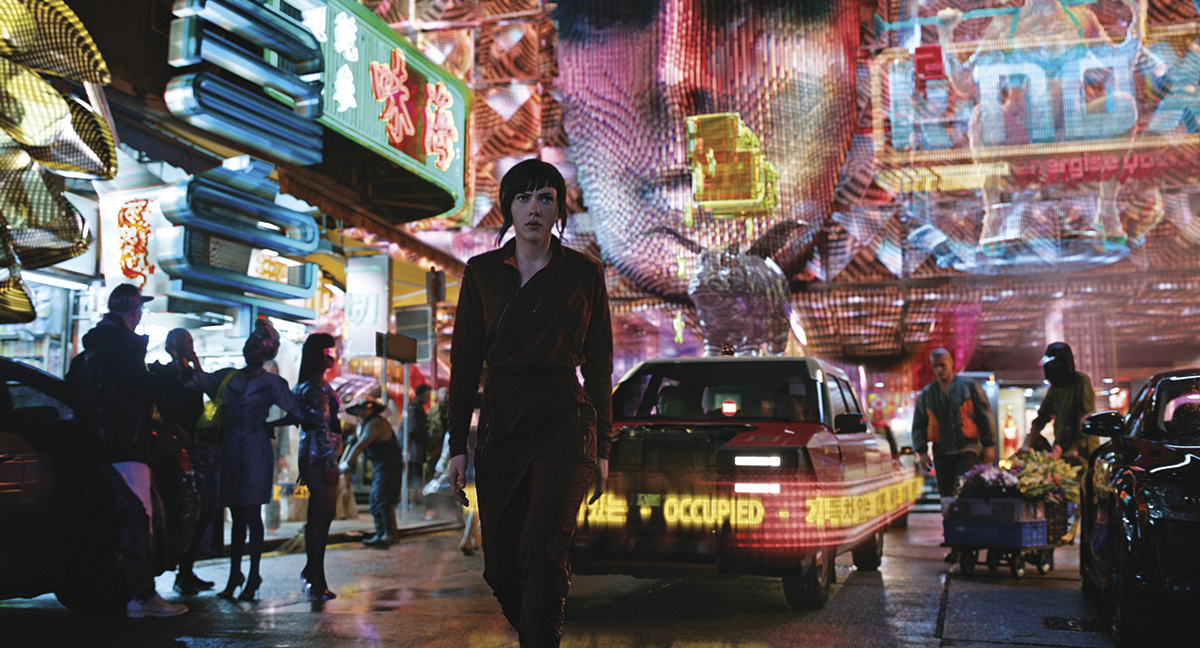
Workflow: Ghosting the Machines
Hall: With our unique palette, I realized monitoring would need to be sophisticated. I proposed working entirely in P3 color space instead of Rec. 709, and Park Road Post was receptive, getting involved calibrating monitors and creating an exceptional workflow to make sure what we saw on set would match projected dailies.
Tony Pratt: Previously critical on-set monitoring and dailies grading has often occurred in Rec. 709, a color space that has no relationship to [the final] DCI P3. Our approach was to monitor D65 P3 throughout the pipeline. The Codex Vaults are connected to Park Road via a direct fiber-optic link. I worked with SGO to deploy highly optimized GPU debayering. This enabled painless grading, effortless conform and on-demand screening from the Arriraw media. The workflow allowed for rapid turnaround and communication between the grading suite, Jess’ team at Stone Street, and Production’s editorial.
Jon Newell: Monitors on set with a wide color gamut can be manipulated and balanced to ensure they use a managed profile and gamma, such that the D65 P3 color space look is consistently presented to critical screens. Carefully profiled Sony OLED’s were used on-set and Dolby PRMs in the dailies grade suite. Feeding these monitors is the Wide Gamut Log-C HD-SDI tap from the Alexa 65, the video stream from all cameras passing through the same “Client LUT” transforming the Log-C signal into the correct color space. I could work with Jess and his DIT [Mike Urban] through prelight with tremendous confidence, as the correct P3 color space was used when passing a CDL/still through to the dailies suite.
Hall: The other aspect that simplified and unified things was working from a single LUT, which I designed with [SHED’s] Yvan Lucas. It captured our unique colors while putting the white point right where we needed. This wasn’t a severe look, remaining in the middle of the curve, but carried a film-emulation quality along with the tweaked white point.
Ian Bidgood: I established a D65 white point for both Rec. 709 and P3 color spaces throughout the facility. Using a common white point has many advantages for the entire production chain – not the least of which is maintaining consistency between offline and online media – and making for more efficient online. A simple in-projector transform to the DCI white point for final grade/DCI mastering is elegant and tracks effortlessly.
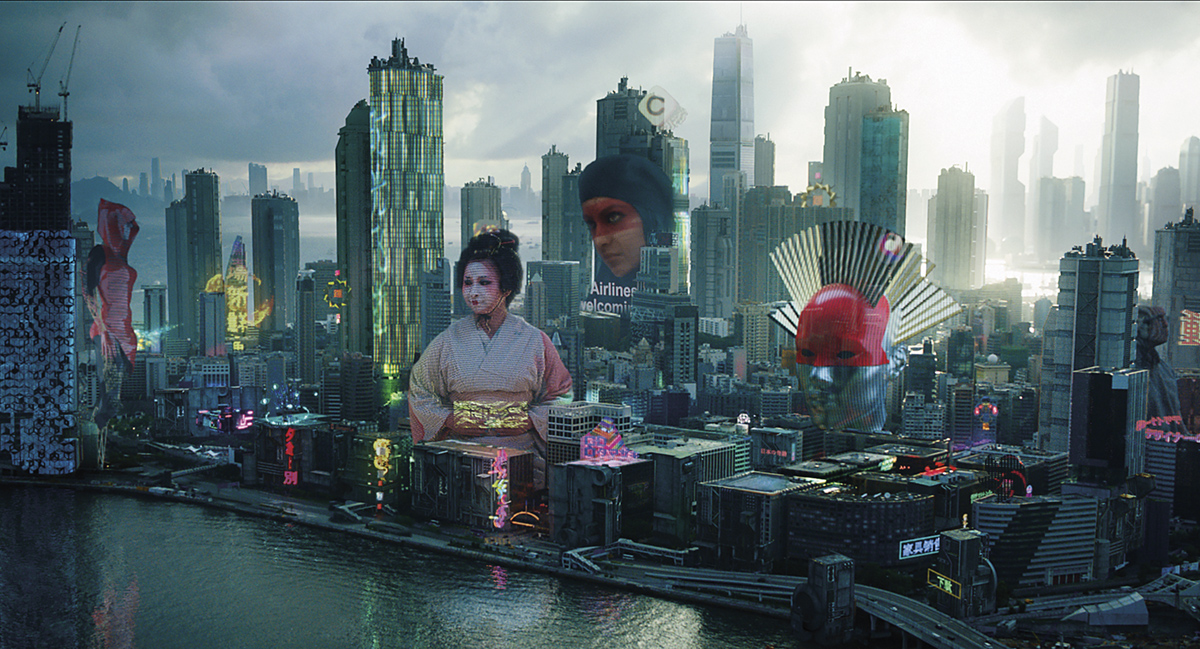
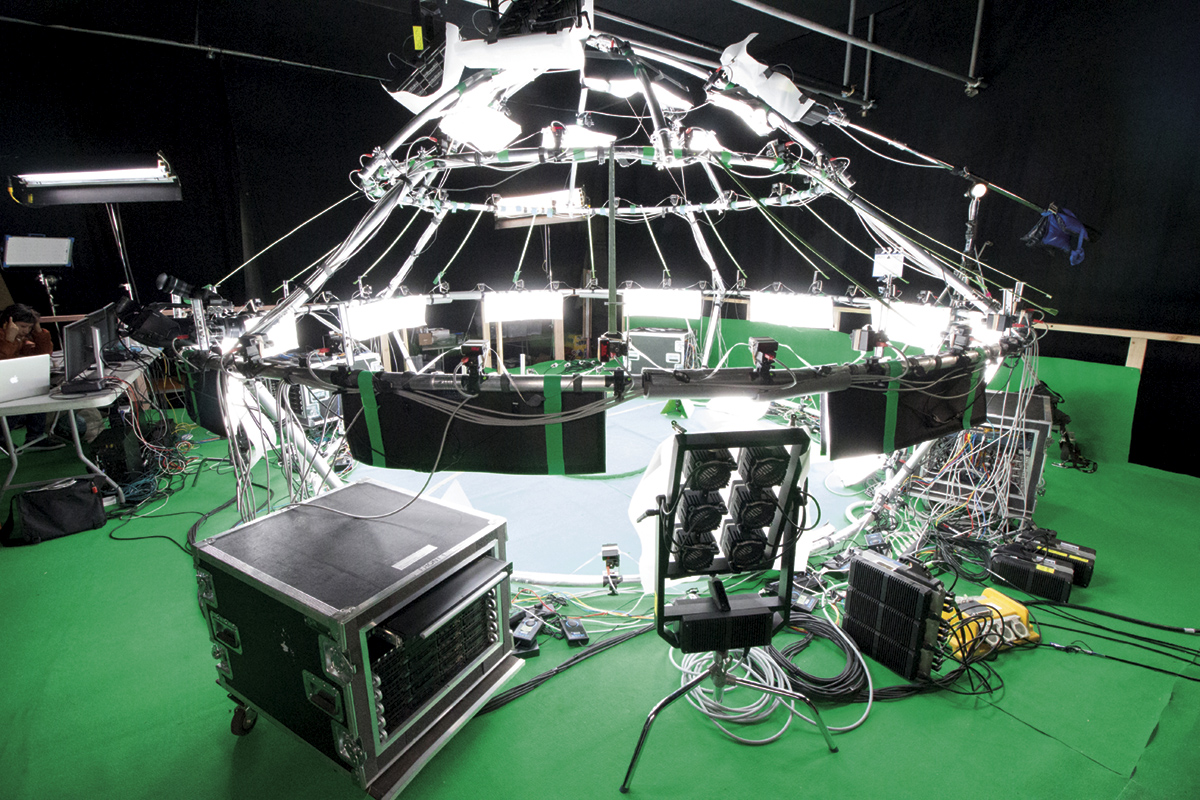
Camera Movement: Battle as Ballet
Hall: New Zealand A-camera/Steadicam operator Pete McCaffrey, aided by 1st AC David Elmes, really picked up on my simplicity in composition, and got how certain traits – like shooting through windows and doorways or a particular camera height and lens choice – implied a perspective that referenced Japanese fine art. Whether on dolly, Steadicam, descender rig or Technocrane, Pete always kept this aesthetic in mind. It was satisfying, compositionally, to see ceilings in frame, as they kind of hinge you into real architecture. There are low angles throughout the work of [Japanese director Yasujiro] Ozu, so this has that Japanese influence as well. [Ozu’s low angles became known as Tatami shots, since they often mirrored the perspective from which a kneeling figure views the world – although his actual camera placement was often even closer to the floor.]
Rocheron: Our opening GhostCam shot runs about 90 seconds, establishing the city with such detail it also becomes a character. As in Blade Runner, advertising is everywhere. But instead of being 2D, these spots all have volume. We created about 65 of these “solograms,” each running up to 25 seconds, but integrating them into shots flying through the city required we be able to move around them. Traditional motion control would have been limiting, so Jess talked with Digital Air’s Dayton Taylor, who builds bullet-time rigs, about photogrammetry for fight scenes. Dayton told Jess about a concept he had for video-photogrammetry using a big array of precisely controlled SLR’s that capture its subject in a dome-shaped volume at 24 fps, all perfectly in sync. This let MPC, after months of R&D to tweak things, place each sologram within the cityscape and move the camera around it while maintaining proper perspective. Each of these ad characters had a slight low-rez look, which kept with the analog feel of this alternate future.
Hall: The Major has a human brain and a mechanical body, so she exists in what I liked to refer to as a third space, outside of each aspect, a theme we carried over from the anime. Since Rupert wanted a purposeful approach to camera movement, I came up with what we called the “GhostCam,” which conveyed this third space. We liked that the Major was ghosting through the world; revealing an inquisitive purposeful nature that also had classical weight. Rupert liked using this exploratory camera to follow Scarlett through scenes, rather than the traditional shot/reverse shot grammar. The lighting design figured into this too, since it meant I had to light whole spaces rather than just a single direction. This was facilitated by having so much lighting achieved practically and built into the sets. Some of our GhostCam shots are very elaborate, finding The Major from a great distance, using a combination of Steadicam, crane or dolly work and VFX.
Rocheron: Hong Kong still has large stretches with sodium vapor lighting. We couldn’t control or relight these areas, so we used effects to recreate them in the look of our 2029 world. Sodium vapor basically has all the blue filtered out, so making that look like a natural source did take some work. We’d be grading faces to one degree and grading the tarmac to a different level, to keep things from looking like we just filtered the whole image. On a shot-by-shot basis we used CDL to do specific grading for dailies, evening things out before the DI. Since the colors are very precise, and so much of the movie’s visual identity derives from them, the LUT used for shooting went to the VFX vendors, with the CDL corrected the same way in native format. MPC worked everything “under the hood” in ACES, but the LUT displaying the image still emulated our desired look, even when viewing on the Avid. All the texture painting and other work done was converted from ACES to the Log-C Arri LUT.
Hall: We worked with second unit director/stunt coordinator Guy Norris to develop a language for the Major’s movements, which had to defy gravity a bit. Rupert wanted a dynamic physicality to how she fought, so we found wire-assisted moves with Guy that helped give her a small boost, enough to show that she was better than human, but not inconceivably so. Everybody liked the idea of continuous shots that brought Scarlett into the action, rather than cutting from a stunt performer to her for close-ups. We’d often stitch from either the stunt person or a digi-double to our lead as the Major moved through frame.
I didn’t want to sacrifice composition and stability in the image during the fights by going handheld. To make things even more balletic, we also shot high-speed with the Phantom. I’ve always been interested in choreographing camera and performer movement to enhance the power and grace of an action. This goes back to early in my career, when I worked with the great choreographer William Forsythe, who had a very muscular style for contemporary dance. We didn’t have access to Spydercam in New Zealand, so we used some low-tech Descender-style rigs, along with Technocrane, to imbue this dynamic. The New Zealand studio had been built for Peter Jackson’s films, and each stage had a different footprint. K stage, built for King Kong, was tall enough to accommodate our aerial work.
by Kevin H. Martin
Photos courtesy of Paramount Picture
CREW LIST
Director of Photography
Jess Hall, BSC
A-Camera 1st AC
Craig Grossmueller
Jonas Steadman (LA)
2nd Unit Director of Photography
Patrick Loungway
Unit Still Photographer
David James (LA)
Publicists
Peter Silbermann (NZ)
Toni Atterbury (NZ and LA)
